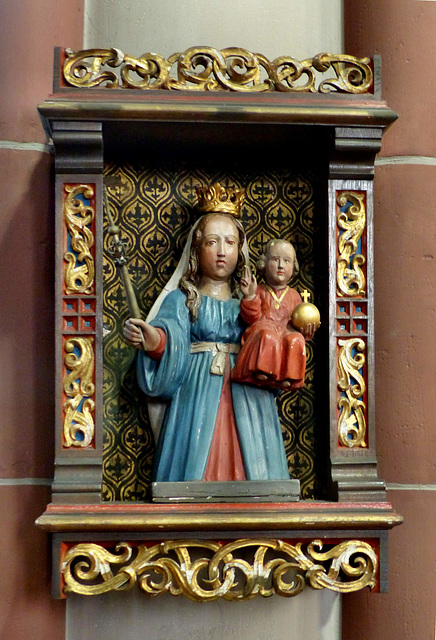Horn - Burg
Horn - Burg
Horn - Mittelstrasse
Horn - Salon Schöne
Horn - Mittelstrasse
Horn - Kotzenbergscher Hof
Horn - Amtsgericht
Horn - Nordstrasse
Horn - Rathaus
Horn - Evangelical Reformed Church
Horn - Evangelical Reformed Church
Horn - Evangelical Reformed Church
Horn - Evangelical Reformed Church
Soest - Patrokli Cathedral
Soest - Patrokli Cathedral
Soest - Patrokli Cathedral
Soest - Patrokli Cathedral
Soest - Patrokli Cathedral
Soest - Patrokli Cathedral
Soest - Patrokli Cathedral
Aachen - St. Michael
Aachen - Cathedral
Aachen - Hof
Lügde - St. Marien
Lügde - St. Marien
Lügde - St. Marien
Lügde - Arminius Apotheke
Lügde - St. Kilian
Lügde - St. Kilian
Lügde - St. Kilian
Lügde - St. Kilian
Lügde - St. Kilian
Lügde - St. Kilian
Lügde - St. Kilian
Lügde - St. Kilian
Lügde - St. Kilian
Lügde - St. Kilian
Lügde - St. Kilian
Lügde - St. Kilian
Lügde - St. Kilian
Lügde - St. Kilian
Cologne - Ubierring
Cologne - Kartäuserkirche
Cologne - Kartäuserkirche
Cologne - Kartäuserkirche
Location
See also...
Keywords
Authorizations, license
-
Visible by: Everyone -
All rights reserved
-
87 visits
Lügde - St. Marien


Lügde was first mentioned in 784 in the "Annales Regni Francorum" ("Royal Frankish Annals") when Charlemagne celebrated his first Christmas in what was then the Duchy of Saxony, namely in "Villa Liuhidi".
The "Villa Liuhidi" was probably a small fortified place. The town of Lügde may have had "some importance" as early as 1195, as a coin minted that year exists. It is certain that the city charter was granted in 1246 at the latest, as the town plan, which is still in its original form today, and the fortifications, such as the town wall, moat and defence towers, were created during this time.
Lügde was a planned foundation by the Pyrmont Counts. It has the typical three-street system with the main axis and two side streets. For a while, Lügde was the capital of the County of Pyrmont and the seat of the counts. As the older St. Kilian (see previous. uploads) church was located outside the now fortified town, a new church was erected inside the walls from around 1250 on. An inscription tells us, that in 1353 Magister Edulus and Thiderius completed (the tower). The nave was completed in an early Gothic style, the choir (in 1408) was late Gothic.
In February 1775 Lügde was hit by a flooding catastrophe. The church was severely damaged and could not be used for a long time. In September 1797 Lüdge was nearly completely gutted by fire. The church was burned down and even the bells were melted. The church got rebuilt, but finally replaced by today´s neo-Gothic church at the end of the 19th century.
I could not find any valuable information about this (little rough) statue. It seems to be put here in the 1930s, but neither did I found where it came from, nore how old it is.
The "Villa Liuhidi" was probably a small fortified place. The town of Lügde may have had "some importance" as early as 1195, as a coin minted that year exists. It is certain that the city charter was granted in 1246 at the latest, as the town plan, which is still in its original form today, and the fortifications, such as the town wall, moat and defence towers, were created during this time.
Lügde was a planned foundation by the Pyrmont Counts. It has the typical three-street system with the main axis and two side streets. For a while, Lügde was the capital of the County of Pyrmont and the seat of the counts. As the older St. Kilian (see previous. uploads) church was located outside the now fortified town, a new church was erected inside the walls from around 1250 on. An inscription tells us, that in 1353 Magister Edulus and Thiderius completed (the tower). The nave was completed in an early Gothic style, the choir (in 1408) was late Gothic.
In February 1775 Lügde was hit by a flooding catastrophe. The church was severely damaged and could not be used for a long time. In September 1797 Lüdge was nearly completely gutted by fire. The church was burned down and even the bells were melted. The church got rebuilt, but finally replaced by today´s neo-Gothic church at the end of the 19th century.
I could not find any valuable information about this (little rough) statue. It seems to be put here in the 1930s, but neither did I found where it came from, nore how old it is.
Nouchetdu38, Marco F. Delminho have particularly liked this photo
- Keyboard shortcuts:
Jump to top
RSS feed- Latest comments - Subscribe to the comment feeds of this photo
- ipernity © 2007-2024
- Help & Contact
|
Club news
|
About ipernity
|
History |
ipernity Club & Prices |
Guide of good conduct
Donate | Group guidelines | Privacy policy | Terms of use | Statutes | In memoria -
Facebook
Twitter

Sign-in to write a comment.